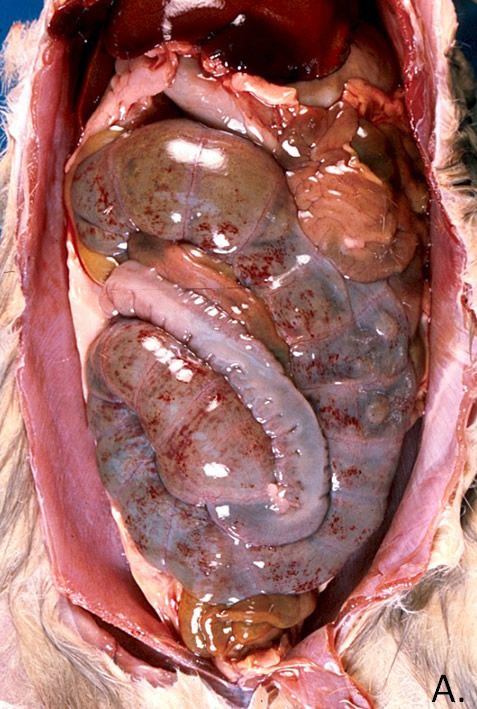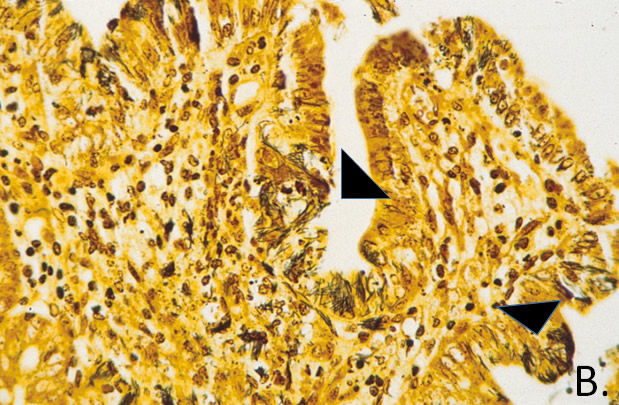Etiology: Clostridium piliforme, an obligate intracellular bacterium, is a Gram-negative, pleomorphic, filamentous organism that can produce spores. There are multiple strains of this bacterium.
Incidence: The incidence of disease is rare in research animals and occurs in young or recently weaned rabbits as a result of an abrupt change in diet, antibiotic therapy, immunosuppressive therapy, or environmental stressors.
Transmission: The disease is spread by spore ingestion (fecal-oral route).
Clinical Signs: In acute clinical disease, profuse, watery, brown diarrhea, dehydration, and death within 12 to 48 hours after onset of diarrhea are typical. The mortality rate is high. In chronic disease, there may be progressive weight loss with soft feces. Exposure of naive adult rabbits may cause little to no clinical disease.
Pathology: In acute disease, the cecum contains brown fluid contents with occasional serosal edema and hemorrhages (A.). Multifocal to segmental necrotizing enteritis extends from the ileum to the proximal colon. Organisms are present in enterocytes and the tunica muscularis, which can be demonstrated using silver stains (B., arrowheads). Pinpoint white foci on and within the liver may or may not be present and correspond histologically to coagulative necrosis with peripheral neutrophilic infiltrates. There may be white myocardial streaks which histologically correspond to necrosis with a pyogranulomatous inflammatory response. Chronic lesions include soft to fluid cecal contents +/- thickened gut wall. There may be stenosis of the ileocecal junction. Histologically, there is granulomatous typhlitis with the presence of bacteria in enterocytes. Liver granulomas may also be present.
Diagnosis: PCR of feces, intestinal tissue, or liver can be used to document the presence of the bacterium. Serologic tests can be used. Histopathological examination of the liver or cecum stained with silver stain can be used to confirm diagnosis; however, organisms are often difficult to demonstrate.

